A film with its own art curator? ‘Inside’ a heist movie’s effort to ‘make it legit’
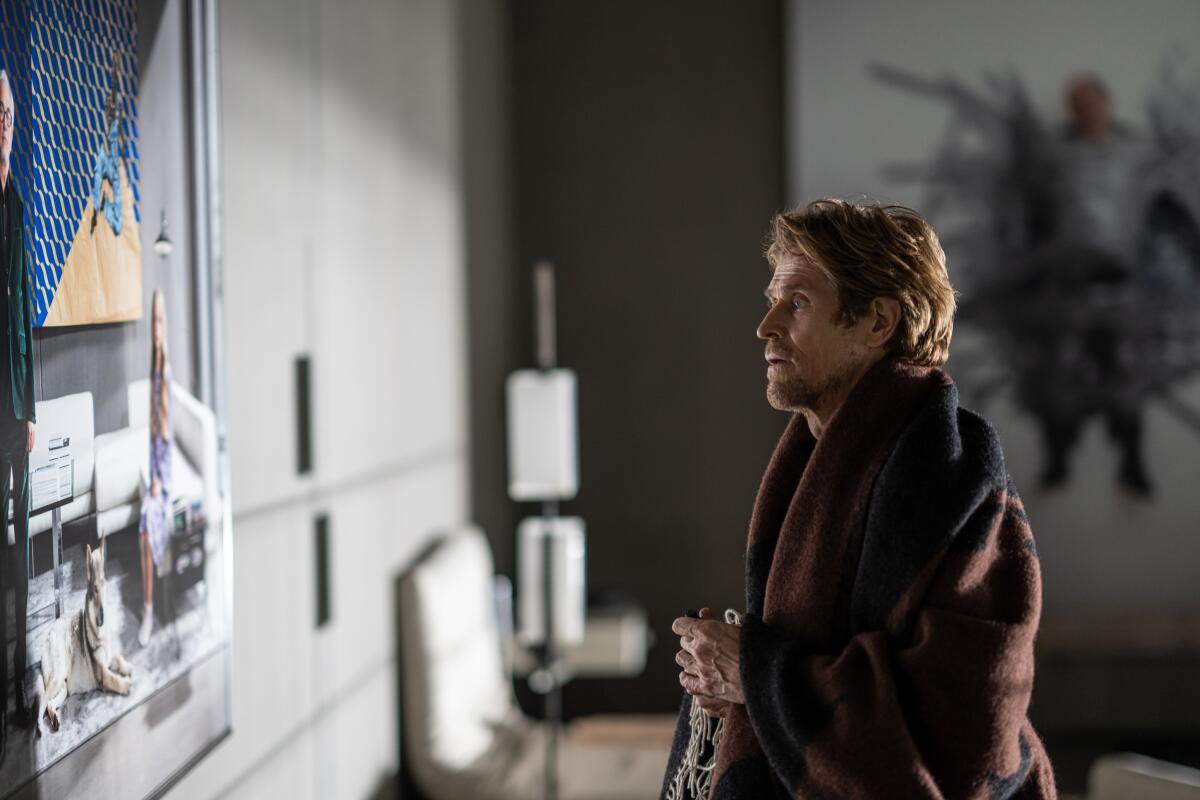
- Share via
Most films set in the art world don’t have a curator. Vasilis Katsoupis’ “Inside” did — and commissioned original contemporary artworks to boot.
The film, set entirely in a New York City penthouse, follows an art thief named Nemo (Willem Dafoe), who arrives to steal a collection of Egon Schiele paintings. When the burglary goes awry, Nemo is trapped inside with the paintings, sculptures and installations collected by the unseen owner. As he is forced to survive in the unwelcoming apartment, Nemo engages with the works — and uses some of them to keep himself alive.
To create the collection, Katsoupis teamed up with Italian art curator Leonardo Bigazzi. Some of the works appear in Ben Hopkins’ script for the film, while others were commissioned or borrowed from artists and galleries.
TV critic and true-crime buff Lorraine Ali selects the 50 best true-crime documentaries you can stream on Netflix, HBO Max, Hulu, Prime Video and more.
“There was a very clear vision on the purpose … some of the works had to fulfill,” Bigazzi explains, “from the banal aspect of having a sculpture in a pointed metal that could be used to open the cellar to more complex elements of the narrative.”
“I had an idea for the collection in my mind, but I needed an expert to make it legit,” Katsoupis adds. “We’ve seen too many films that have to do with art and most of the time the art is fake or look-alikes. I really wanted in my film for everything to be very, very correct.”
Dozens of real-life works populate the penthouse, including pieces by Francesco Clemente, Maurizio Cattelan, John Armleder, Alvaro Urbano, Maxwell Alexandre, David Horvitz and Joanna Piotrowska. Here, Katsoupis and Bigazzi explain the intention behind six of the most memorable.
Francesco Clemente, ‘After and Before’ (2021)
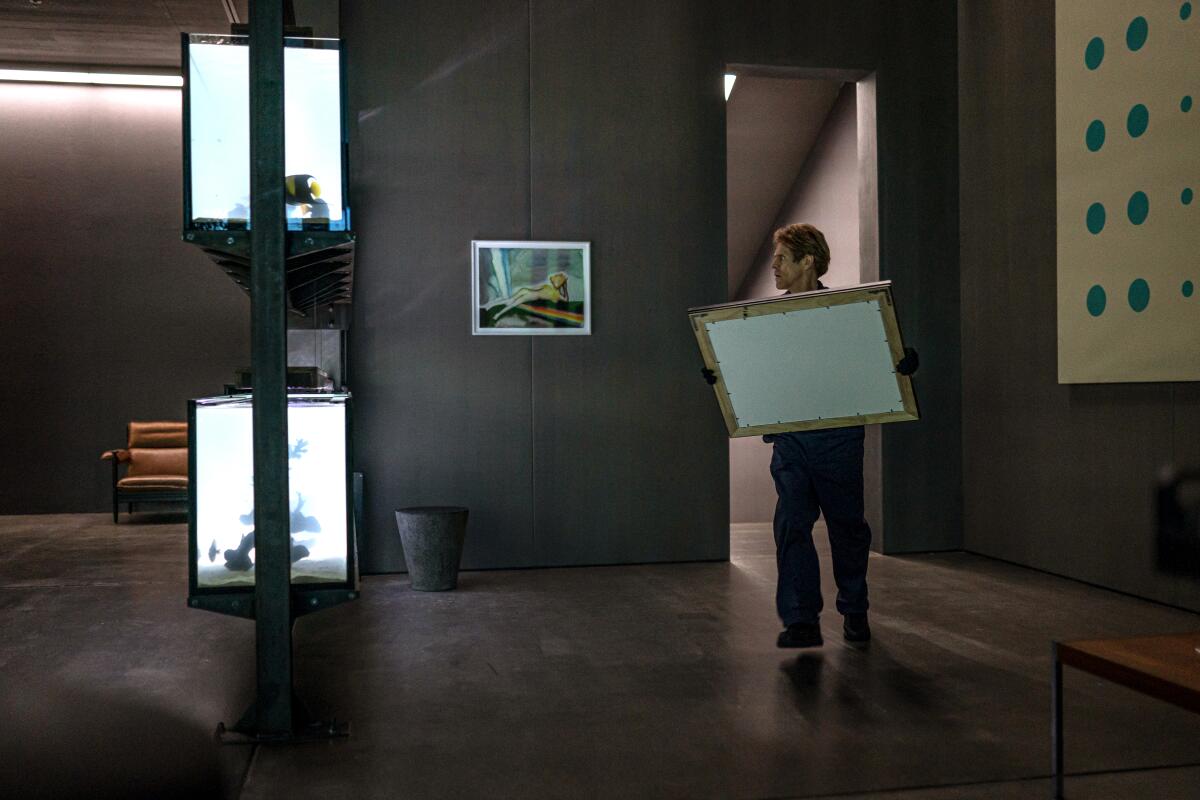
Several pieces of art appear exclusively in “Inside.” For one of them, Bigazzi approached Italian painter Francesco Clemente about an original commission influenced by an existing work, “Christina’s World” by Andrew Wyeth.
“Everyone knows that’s in the MOMA collection, so it would be impossible for our collector to have this artwork,” Katsoupis says. “For me, this art is [about] this figure that is alone in this field and feels vulnerable because Christina is incapable of moving. We asked Francesco to be inspired by this and make his own take.”
“‘Christina’s World’ is not a landscape with a woman; it’s really like a psychological portrait of the impossibility of reaching something that is unreachable,” Bigazzi says. “The role that this work had in the script was this idea of Willem looking at this painting and imagining the possibility to reach this woman as much as he’s eager to reach the outside world. The Clemente style is a very recognizable watercolor style. It’s a work that any art connoisseur or professional would recognize instantly.”
Petrit Halilaj, ‘Do you realise there is a rainbow even if it’s night!?’ (2020)
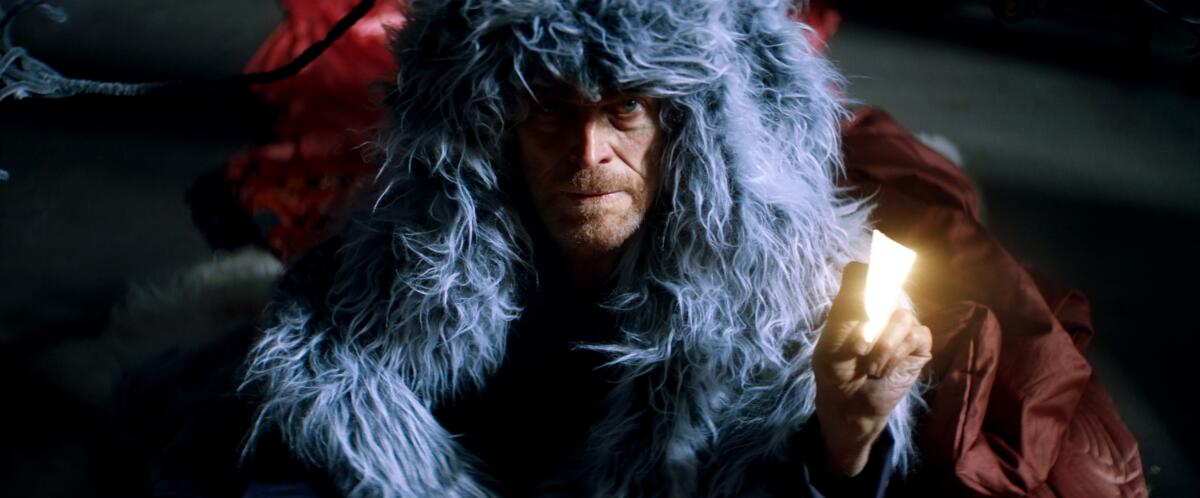
Dubbed “The Moth” by the filmmakers, “Do you realise there is a rainbow even if it’s night!?” is a continuation of Kosovan artist Petrit Halilaj’s series for the 2017 Venice Biennale. Bigazzi commissioned the piece specifically for “Inside” to be installed on the penthouse wall, and while Dafoe was touring the on-set art with Katsoupis, he decided to don it as a costume.
“He said, ‘I’m going to be freezing cold. Why am I not wearing this?’” Bigazzi remembers. “And it became one of the most iconic images of the film where he’s wearing this moth, becoming almost like a shaman.”
Maurizio Cattelan, ‘Untitled’ (1999)
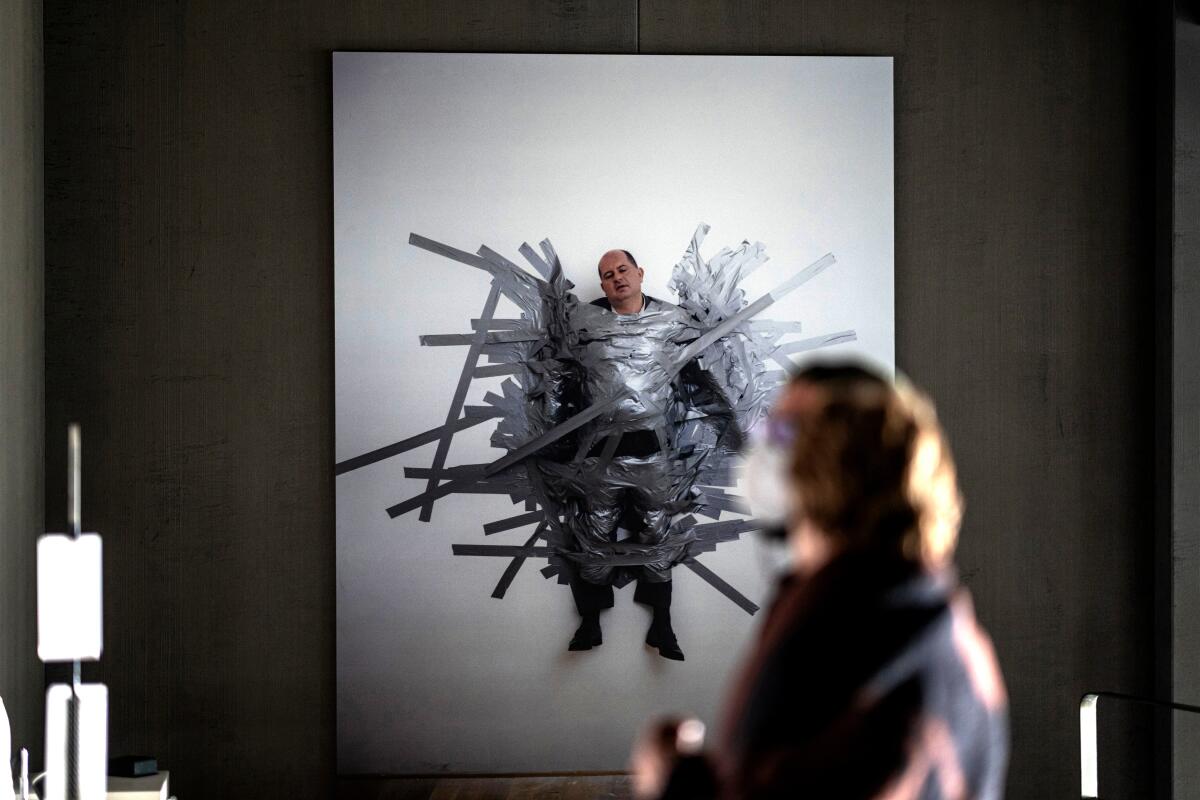
The print of Maurizio Cattelan’s work, also known as “A Perfect Day,” showcases an installation at Milan’s Galleria Massimo de Carlo, where the artist duct-taped his gallerist to the wall. It marked the first time Cattelan used duct tape (more recently, he taped a banana to a wall at Art Basel), and his intention was to reverse the power dynamics in the gallery world.
“For me, this work was perfect because Nemo finds himself in a situation where he’s there to steal and he ends up in a prison,” Bigazzi says. “This idea of power structure and control is flipped.”
Later in the film, Nemo destroys the print, which was not scripted.
“Because they were shooting chronologically, Willem had a lot of time on set to negotiate his relationship with the works,” Bigazzi recalls. “Since the very beginning we negotiated the fact that any damage to the work that happened had to be for the character’s survivalism, either physical or psychological. I called Maurizio to ask him and he was really excited.”
“That happened many times on the film,” Katsoupis adds. “You had these artworks that were getting a new life inside the movie, even if it wasn’t meant to happen in the script. It was happening organically while we were shooting.”
For all its representational achievements, the sentimental, self-important ‘Everything Everywhere All At Once’ is not as bold a choice as it appears.
Breda Beban, ‘I can’t make you love me’ (2003)
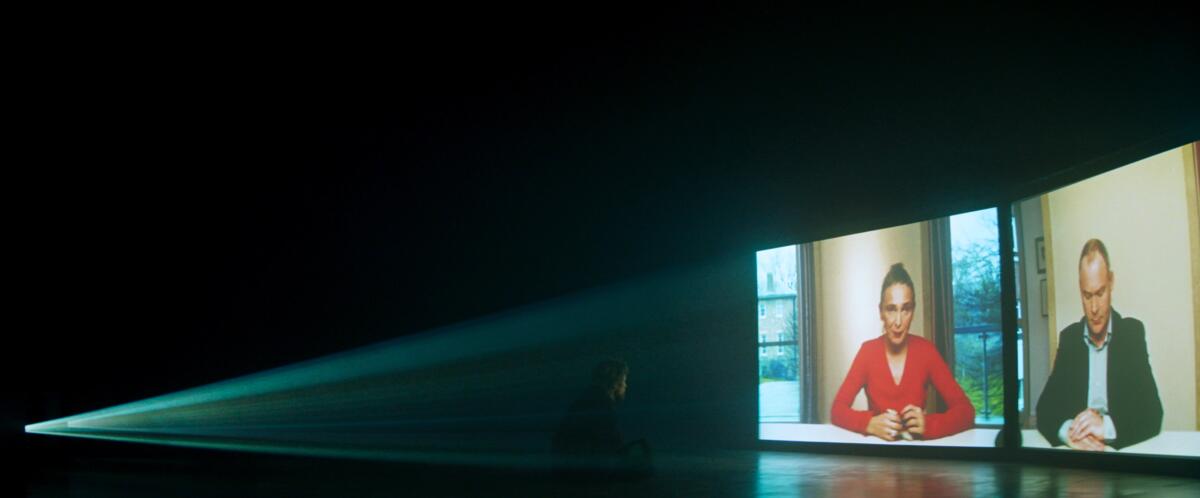
Serbian video artist Breda Beban, who died in 2012, was Katsoupis’ teacher and mentor during his MFA in screen arts in England, and the filmmaker wanted to pay tribute to her in his film. Two of Beban’s works appear in “Inside”: a small inkjet print titled “Arte Vivo (No. 8)” and an eight-minute dual-screen video installation, “I can’t make you love me.”
“It is simple in the script: It is a form of entertainment for him,” Katsoupis says of the video work. “It’s like a small cinema. It’s the only artwork that has dialogue and has some movement. On the TV, you cannot get any channels — everything is destroyed except these screens.”
“The work speaks about a couple who share the same cinematic space,” Bigazzi explains. “You understand that they’re in the same room and sitting at the same table, but because they’re on two different screens it’s as if they were never encountering [each other]. It’s a love that cannot happen. There is a similar impossibility of connection between Willem’s character and the woman [he watches] on the CCTV. It also becomes a discourse on meta-cinema: Although the audience is in a same exchange with Nemo, [they] will never reach level of being there with him, inside the house, trapped.”
Joanna Piotrowska, ‘Untitled’ series (2015-17)
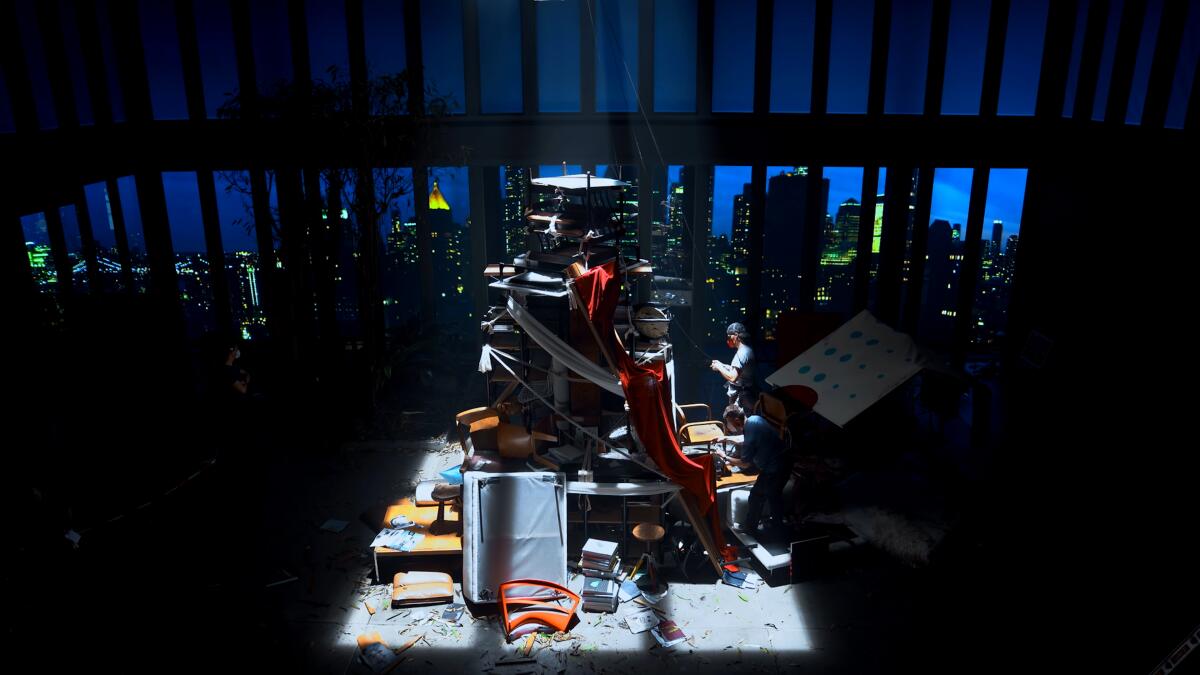
Several years ago, Polish artist Joanna Piotrowska asked friends around the world to build shelters in their homes with objects they had lying around. The result was a series of images of makeshift shelters. The works mirrored what Katsoupis imagined Nemo eventually building in the penthouse.
“It’s about the idea of building your own precarious refuge inside the domestic environment with the illusion of this being something that protects you but actually being extremely vulnerable,” Bigazzi says. “Joanna’s photographs appear at the beginning when the house is still totally pristine and perfect, and then it’s almost as if the shelter then materializes in the space later on in the film.”
Nemo’s towering sculptural shelter, built on the set by production designer Thorsten Sabel, was created with furniture and some of the actual art.
“It looks like an art installation,” Katsoupis notes.
David Horvitz, ‘All the time that will come after this moment’ (2019)
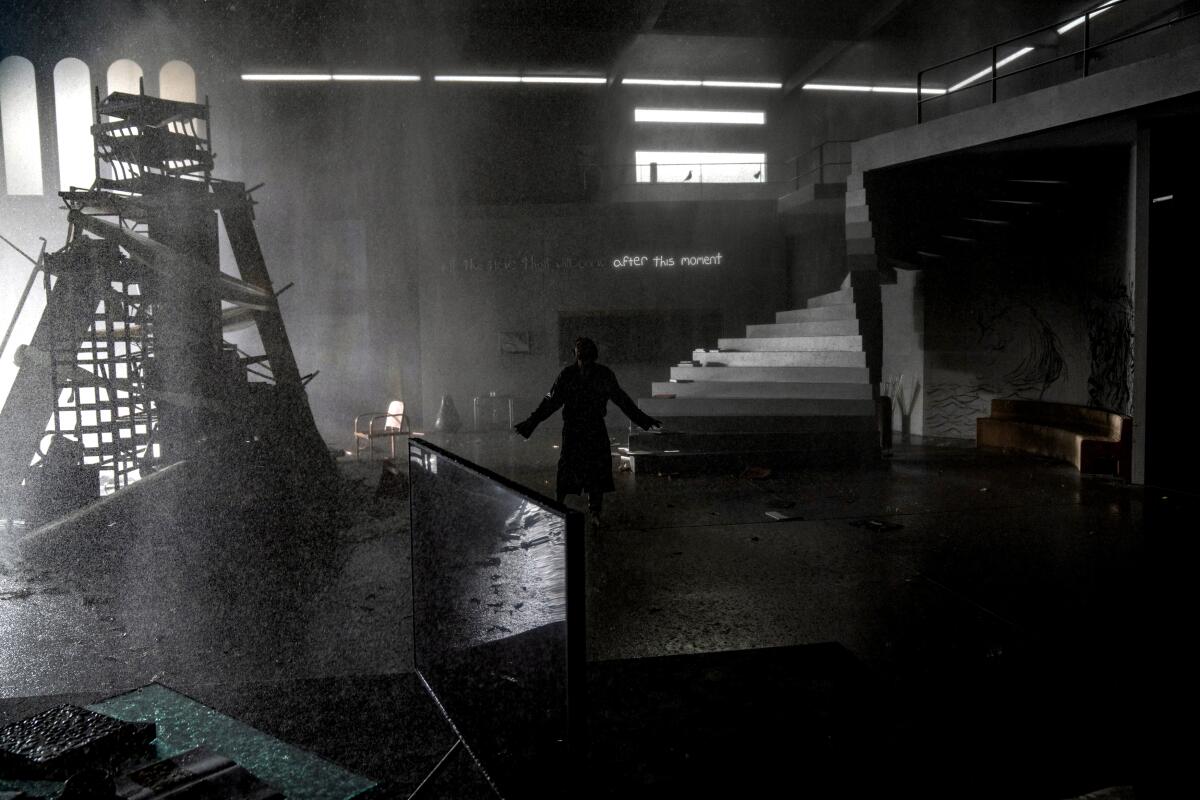
A neon light sculpture, created by Los Angeles-based artist David Horvitz, hangs in a prominent location in the collector’s apartment. For the first half of the film, the sculpture’s nine words are perfectly illuminated. Later, after water floods down the walls, only three remain: “after this moment.”
“The magic of cinema is when the water [came in] half of the sentence turned off. That was not intentional — it happened on the set,” Katsoupis says.
“This really becomes a perfect statement of the generative possibilities of when you put art in a different context,” Bigazzi adds. “In the film it’s really after that moment that everything is different because there’s water on the floor. The fact that it happened by chance shows that certain things, when activated in a certain way, gain their own life.”
More to Read
Only good movies
Get the Indie Focus newsletter, Mark Olsen's weekly guide to the world of cinema.
You may occasionally receive promotional content from the Los Angeles Times.












